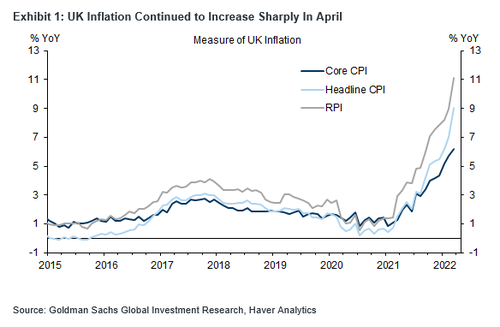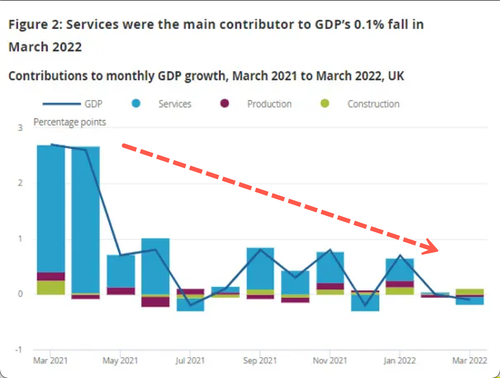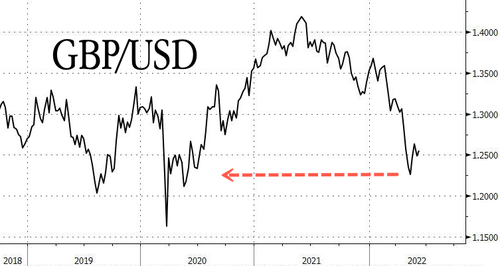By Josh Owens of Oilprice.com
The global energy market is in turmoil, with electricity bills around the world soaring and scant options when it comes to securing new supply. A combination of Russia’s invasion of Ukraine, years of underinvestment in new projects, and the rapid return of demand after covid have overwhelmed the energy market. The price of everything from coal to natural gas, oil, and even lithium is soaring. And while it may be impossible to conjure up new supply in the short term, now is certainly a good time to reconsider how best to invest in our energy infrastructure going forward so as to fortify it against future crises. In particular, it is time to revisit the debate over nuclear power, consider why it fell out of favor, and if it is time to bring it back.

The state of nuclear power today
Following the Fukushima disaster in 2011, nuclear power fell out of favor around the world. Most notably, Japan and Germany moved to phase out nuclear power altogether. Then, following the shale boom in the U.S. and the remarkable cost reduction of solar and wind energy, the economics of nuclear power grew increasingly unattractive. More recently, however, interest in nuclear energy is bouncing back. China has committed to building 150 new reactors in the next 15 years, the Biden administration is investing $6 billion in saving financially distressed nuclear reactors, and the European Commission declared that some nuclear energy investments would be labeled as ‘green’. This sudden rush to support nuclear is perhaps unsurprising if you consider that the IEA’s road map to achieve net-zero emissions by 2050 had nuclear power generation nearly doubling. Despite that roadmap, nuclear has been struggling to gain support.
Globally, nuclear energy made up 10% of global electricity generation in 2021, down from 17% in 2000. It did, however, see a 4% increase from the year before, adding 100Twh to reach a total of 2,736 TWh. It seems nuclear power could be on the brink of a renaissance, and Russia’s invasion of Ukraine could well speed that up, but there are still plenty of reasons to be wary of the energy source.
The argument against nuclear power
Ultimately, the argument against nuclear power comes down to three key factors – safety, cost, and time.
The most visible problem with nuclear power is the danger of a nuclear meltdown. The fact that by simply naming two cities, Fukushima and Chornobyl, one can evoke images of a nuclear catastrophe is evidence enough of the fear that is associated with nuclear energy. A nuclear meltdown and the resultant radiation can poison the surrounding environment, force citizens to permanently flee their homes, and cost lives. Beyond that more direct threat, there is also the safety aspect of disposing of nuclear waste. Roughly 3% of nuclear waste is so radioactive that it has to be securely stored for 50 years. While there isn’t a huge volume of waste to deal with at the moment, an expansion of nuclear energy will only add to this risk. From the risk of an explosion or nuclear meltdown to the very real and unsolved problem of dealing with nuclear waste, nuclear energy undeniably poses a degree of risk.
The second, and arguably more important, weakness of nuclear power is the large up-front cost associated with completing a project. Nuclear energy advocates have long been claiming that costs will fall, but project after project has overrun its budget. The latest example of this is the Vogtle 3 and 4 nuclear-generating stations in Georgia, which are now due to come in 250% over budget. In 2017, two unfinished nuclear reactors in South Carolina were abandoned due to cost overruns, wasting roughly $9 billion. Those nuclear projects that have succeeded in the U.S. have been supported by government research, development, and insurance. Realistically, financing a nuclear project is way beyond the balance sheet capacity of most utilities in the U.S. While proponents may promise that prices will fall, the track record of nuclear power projects running over budget is hard to argue with.
Finally, opponents of nuclear power will frequently point to the time it takes to bring nuclear power projects online. Yes, we need energy now, yes we want low-carbon energy, and yes we need it to be reliable, but if we sign off on building a nuclear power plant today, it will take 10 years or more to produce its first drop of energy. The nuclear power plants in Georgia that are 250% over budget are also six years behind schedule. It’s fine to sell the dream of nuclear energy, but why waste money on an energy project that, if it avoids being abandoned, will be providing energy for a market that will look very different from today’s?
For the past decade, this argument has been difficult to counter, but as the geopolitical, environmental, and technological context has shifted, it has become necessary to revisit the debate.
Why it’s time for a nuclear renaissance
The main strengths of nuclear power are that it is clean, reliable, and space-efficient. It is these characteristics that have made it the dominant source of clean electricity in the United States. Ultimately, the reason it has not been expanding over the last decade is that the cost and risks associated with nuclear energy have been deemed to outweigh the benefit of this clean and reliable energy. Today, with energy prices soaring, global emissions rising, and nuclear costs potentially falling, that calculation has changed. Firstly, if governments around the world are serious about their commitment to cut emissions, nuclear energy will have to be a central part of their energy mix. Secondly, the geopolitical instability and supply chain problems the world is currently experiencing have thrown the importance of energy security into sharp relief. Finally, new technologies and approaches for nuclear energy production could counter some of the cost and time concerns of critics. While nuclear energy is far from a silver bullet, it would undoubtedly make the global energy mix both cleaner and more resilient.
If governments and international organizations are serious about the aggressive emissions reduction targets they have set, then then they will need a clean and consistent energy supply. That means an energy system that uses renewables combined with battery storage, fossil fuels combined with carbon capture, geothermal energy, or nuclear energy. Of those options, nuclear energy is the only one that can provide energy at scale currently. This fact means that every gigawatt of nuclear energy that we lose is a gigawatt of clean energy that is likely to be replaced by coal or natural gas. This is a phenomenon that was seen in New York when it closed the Indian Point plant. The argument for nuclear energy is even more compelling when you add the need to decarbonize transportation and industry, a task that will require huge amounts of new energy supply to create hydrogen and ammonia. Finally, there is the physical footprint of nuclear energy, a footprint that is set to shrink with the advent of small modular reactors. While renewable megaprojects face resistance due to the threat they pose to ecosystems, modern nuclear reactors pose relatively little threat to the immediate environment. From an environmental perspective, the world is undeniably better off with nuclear energy than it would be without it.
There are few events in modern history that have highlighted the importance of energy security more than Russia’s invasion of Ukraine. The fact that Russia is both at war with Ukraine and paying Kyiv for natural gas flows is difficult to get your head around. Ultimately, access to energy is existential. Europe cannot afford to stop importing natural gas and Russia cannot afford to stop selling it. When considering nuclear power in this context, it represents a more diversified and therefore more resilient energy mix. Russia is a major exporter of uranium, so any expansion of nuclear energy would have to include a diverse and secure supply chain. But if Europe and the U.S. had backed nuclear energy a decade ago, there is no doubt energy markets would be in a very different place today. Another geopolitical issue of importance is the influence that a large nuclear energy actor can have over nuclear proliferation. According to the IEA’s pathway to net-zero emissions by 2050, two-thirds of new nuclear reactors will be built in emerging markets and developing economies. Meanwhile, of the 72 nuclear reactors being built outside Russia, less than 3% are being built by U.S. companies. China and Russia are building 20% and 50% of those reactors respectively. In short, that means both Russia and China are in an incredibly strong position to influence the international nuclear industry. Between the energy security concerns highlighted by Russia’s invasion of Ukraine and the national security concerns associated with influence over the global nuclear regime, the geopolitical role of nuclear energy is increasingly important.
The final reason to reconsider the role of nuclear power in the modern era is the technological advancements the industry has undergone in the past decade. Nuclear energy is becoming smaller, safer, and faster. While it is necessary to take the promises of new nuclear technologies with a grain of salt, projects like the Rolls Royce SMR are expected to significantly reduce the price of nuclear energy. Bill Gates, predictably, is also getting in on the action with an SMR that is expected to reduce the cost of nuclear by 50%. Other approaches include new technologies to reduce the amount of waste created, new safety features that eliminate the need for offsite electricity, and new coolants such as helium or molten salt. While it could be argued that promises of new nuclear technology are just as valid as promises of miracle batteries and nuclear fusion, the development of SMRs is considerably further along than either of those energy innovations. It is important when considering the future of nuclear energy to recognize that the industry itself is developing and costs and timelines could well fall.
Ultimately, while the promise of new nuclear technology may not convince critics, the need to reduce emissions and increase energy and national security is going to become increasingly hard to ignore.
The Best Way To Embrace Nuclear Energy
If we are to embrace nuclear energy, the most difficult problem to overcome will be the cost. In order to deal with this problem, one must reimagine the role of nuclear power in our society. It will be necessary, as argued in a previous article on Oilprice.com, to treat our nuclear power in the same way we treat military jets. These are necessary, regardless of the cost. A private-sector contractor will submit a bid, have it approved, and then build the system. The first project may run over budget, but it will be completed and the following projects will likely be progressively cheaper – bringing the average cost down. This is a matter of energy security, environmental protection, and geopolitical influence. It does not have to be, and quite possibly never will be, a commercially viable power source.
As energy prices, geopolitical tensions, and global carbon emissions soar, the call for nuclear energy will only grow louder. In the words of Voltaire, the best is the enemy of the good, and nuclear energy is looking like an increasingly good solution.












